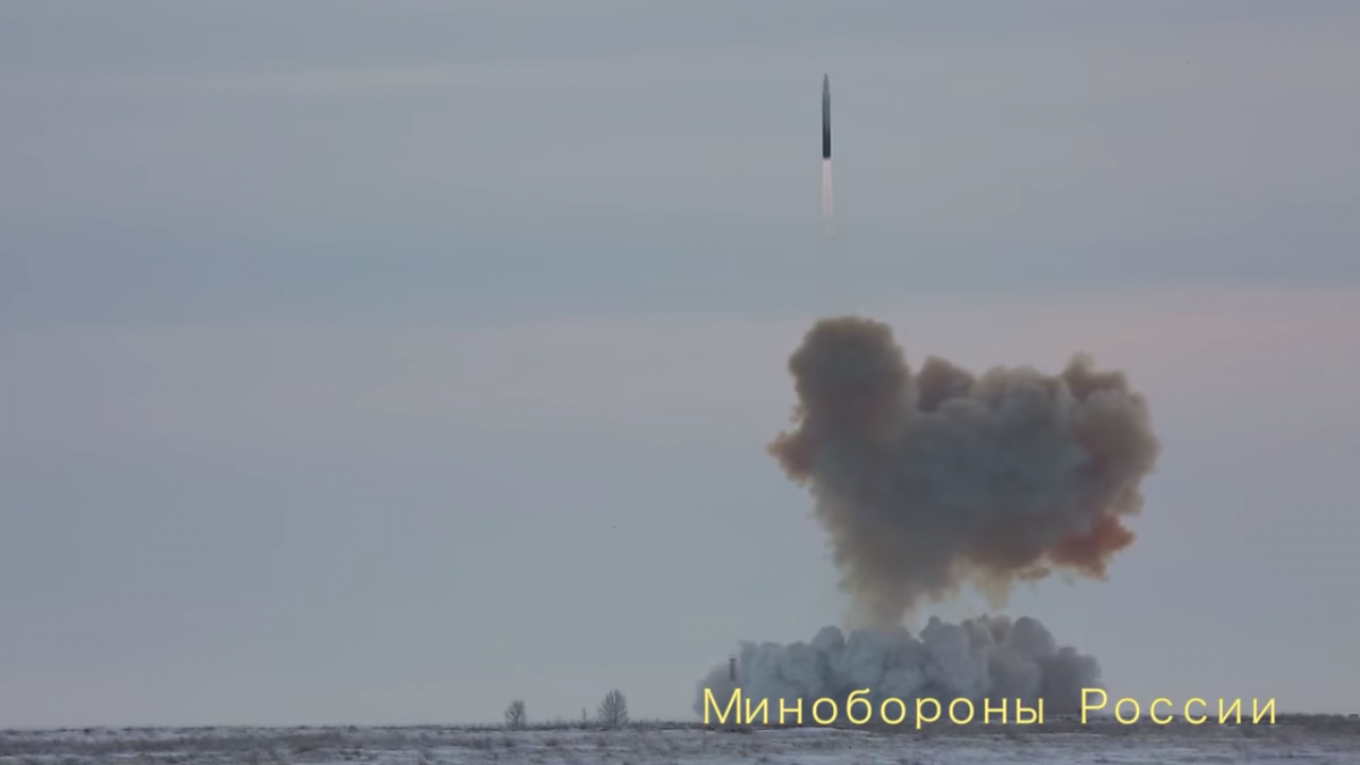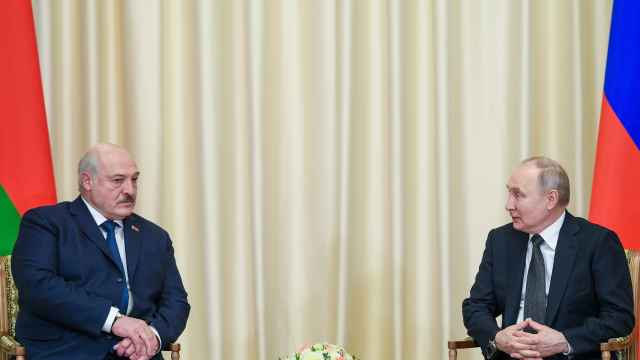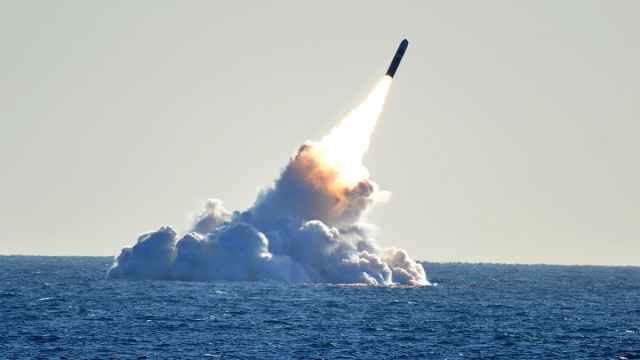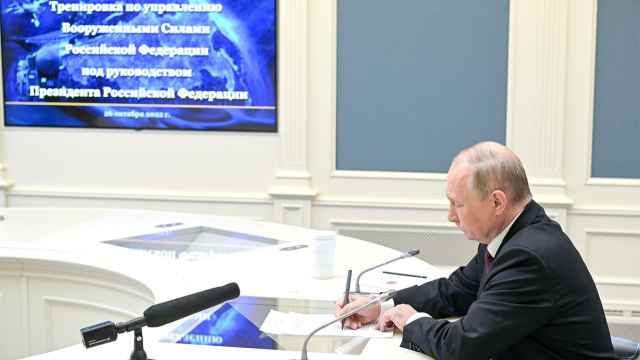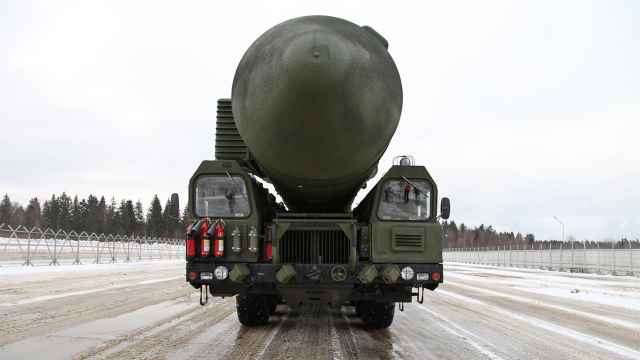So far, 2019 is definitely not the best year for arms control, with the INF Treaty dead, the New START treaty extension in limbo and the Open Skies Treaty under increasing pressure.
However, a glimmer of hope appeared late last month when Russia’s Defense Ministry showed its new Avangard hypersonic missile system to U.S. inspectors under the provisions of the New START treaty.
Avangard — reportedly labeled the SS-19 Mod 4 by the U.S. — is one of Russia’s newest and most advanced weapons systems. President Vladimir Putin first announced its development in a March 2018 speech — along with a slew of other new weapons.
The system consists of a hypersonic glide vehicle that is launched by an intercontinental ballistic missile (ICBM) as a booster, though it flies on a trajectory that hardly resembles a ballistic missile and is capable of maneuvering through the atmosphere to bypass missile defense assets and strike enemy targets.
Its actual capabilities remain a topic for discussion, but to dispel widespread confusion, one fact must be emphasized: Traditional ICBM reentry vehicles have much higher terminal speeds than any hypersonic glider as the latter inevitably loses speed when making turns and flying through the atmosphere.
In any case, the Avangard is a real and capable system — even if it will have little immediate impact, since Russia (and the U.S. for that matter), possesses traditional nuclear delivery vehicles that are capable of destroying the enemy without any missile defense-related concerns.
In recent arms control negotiations over the New START treaty, U.S. officials had quite openly requested for Moscow to include all of its newest weapons as one of the conditions for the treaty’s extension. However, their full inclusion seems impossible from a purely technical point of view — there are no definitions in the treaty that would apply to Russia’s new Poseidon nuclear-powered unmanned underwater vehicle, the Burevestnik nuclear-powered unlimited-range cruise missile or the Kinzhal hypersonic aeroballistic missile. Opening up and re-negotiating the treaty before February 2021 also seems unlikely.
For this reason, Russia’s readiness to include the Avangard into inspections was clearly a positive step forward that demonstrated Moscow’s eagerness to extend the New START treaty. Until recently, there have been conflicting assessments — at least within the expert community — as to whether it is even possible to include a hypersonic glider in the treaty. In the end, the Russian side decided that such an approach is possible, probably due to the fact that the Avangard uses an existing type of ICBM (SS-19) as a booster, as well as an existing type of silo launcher (for the SS-18) — even if both are certainly modified.
By all accounts, it must have been quite tricky for Russia to have followed each letter of the treaty when it allowed the recent U.S. inspection, as the Avangard likely uses both a new payload type as well as some modernization of the booster as well. It remains to be seen how satisfied the U.S. side will be.
Meanwhile, the most important question is how the Avangard will affect the New START’s limitations on the number of deployed warheads (1550 for each country). Early reports suggest that the new system carries a single nuclear warhead, while the original SS-19 had six. The Russian side must have found a way to demonstrate this to the U.S. inspectors without disclosing too much information about the glider technology itself.
Now, a lot depends on how our American partners will handle the results of the system’s exhibition. Even the slightest U.S. recognition of Russian goodwill can increase the chances of the New START’s extension. However, U.S. officials resorting to traditional talking points and leaks about malign Russian intentions and cheating will signal exactly the opposite.
In a few weeks, Russia will declare that the first Avangard regiment has achieved initial operational capability (starting with two missiles). Russia’s Strategic Missile Forces will then start to accumulate real-life experience in operations and maintenance of the hypersonic weapons.
A lot will be said about the new era in strategic weapons in the coming weeks. Still, for the sake of national and global security, it would be much more promising to extend the era of old arms control treaties.
Not because they are perfect, but because they will allow us to look for new solutions without diving headfirst into the chaos of an unrestrained and non-transparent nuclear weapons build-up. Russia has now made a concrete move in the right direction.
A Message from The Moscow Times:
Dear readers,
We are facing unprecedented challenges. Russia's Prosecutor General's Office has designated The Moscow Times as an "undesirable" organization, criminalizing our work and putting our staff at risk of prosecution. This follows our earlier unjust labeling as a "foreign agent."
These actions are direct attempts to silence independent journalism in Russia. The authorities claim our work "discredits the decisions of the Russian leadership." We see things differently: we strive to provide accurate, unbiased reporting on Russia.
We, the journalists of The Moscow Times, refuse to be silenced. But to continue our work, we need your help.
Your support, no matter how small, makes a world of difference. If you can, please support us monthly starting from just $2. It's quick to set up, and every contribution makes a significant impact.
By supporting The Moscow Times, you're defending open, independent journalism in the face of repression. Thank you for standing with us.
Remind me later.



